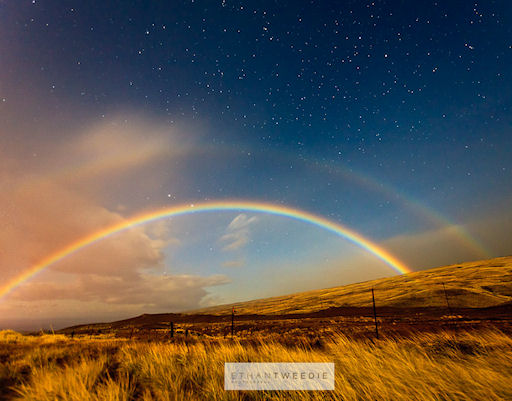Nunca pensei que fosse possível, mas pelos vistos é!
Pelos vistos, um luar brilhante também pode ter o mesmo efeito que o Sol nas gotas de chuva.
http://www.spaceweather.com/
http://www.spaceweather.com/submiss...ge_name=Ethan-Tweedie-_MGL1528_1301034248.jpg

Pelos vistos, um luar brilhante também pode ter o mesmo efeito que o Sol nas gotas de chuva.
retirado de:A RAINBOW AT NIGHT:
Recipe for a rainbow: Add bright sunlight to raindrops and voila!--a beautiful band of multi-colors arcs across the sky. With such an ingredient list, you might suppose that rainbows can only be seen during the day, yet on March 24th Ethan Tweedie of Kamuela, Hawaii, recorded this spectacular example long after dark:

"It was a moonbow," explains Tweedie. The bright moon played the role of sun, illuminating nightime raindrops falling through the damp Hawaiian air. "I've been trying to photograph a moonbow for a long time. Last night I was driving back from the Volcano there it was!"
Tweedie's long exposure revealed something even more rare: a secondary moonbow. It's the faint 'bow arciing above the brighter primary. Primary rainbows are caused by single reflections inside raindrops; secondary bows are caused by double reflections. It was a night to remember, indeed.
http://www.spaceweather.com/
http://www.spaceweather.com/submiss...ge_name=Ethan-Tweedie-_MGL1528_1301034248.jpg




